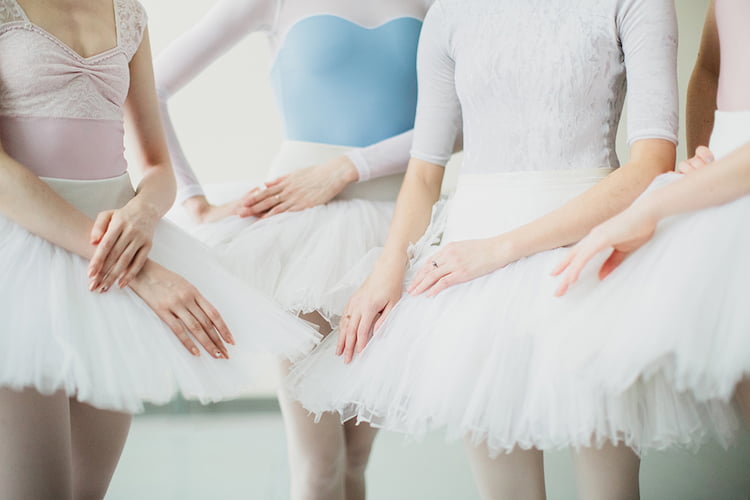
Source: Unsplash.com
Ballet is art. And for a professional ballet dancer, their dance training becomes a lifestyle. The beginnings are important, and constant practice is the key when it comes to learning new techniques and skills. Setting up a ballet barre at home can be very helpful to develop your ballet training plan as continuous maintenance of a technique is essential to perform at your best.
Ballet attire is important as well. It makes the lines and the body placement much more visible to your instructor, and it can help you dance correctly and safely. Dressing like a dancer can also help you feel more comfortable in your early beginnings. Your costume can define the choreography, and your ballerina tutu plays a big role and can highlight your stage performance, providing hints of character to the story.
Why Do Ballerinas Wear Tutus?
The word tutu derives from the French language and means bottom. Most commonly made from tulle, the tutu was designed to show off a ballerina’s legs and footwork and over the years it became an integral part of the ballet aesthetic. Today, tutus are created in many dazzling colours and styles to help ballerinas show off their graceful dancing onstage.
What Are the Different Styles of Tutus?
The tutu was first introduced in 1832 by ballet dancer Marie Taglioni. Before this, dancers had worn only floor-length skirts, but Marie’s skirt was shortened to calve length to showcase her delicate pointe work. In the 1870s, tutus became shortened above the knee to offer ease of movement and expose the full leg while retaining the elegance of a skirt. Today, there are a few different styles of tutus available, so you can choose the perfect ballerina tutu for your next performance.

Source: Pinterest.com
Romantic Tutu
The romantic tutu is a long and flowing tulle skirt, made of three to six layers reaching somewhere around mid-calf. There are two types of romantic tutus. The first one has the skirt beginning at the waist and the second one begins at the hip.
Classical Tutu
As pointe work became more sophisticated, tutus were cut above the knee to showcase the complicated ballet footwork. That’s how the Classical tutu was introduced to the world. It had the tulle jutting out horizontally from the ballerina’s hips, making the legs more visible and providing a new range of motion. Today, Classical tutu comes in four different styles, such as the following.
Pancake Tutu
The Pancake tutu is coming straight out of the hips, it’s short and has several layers of tulle and net. They are supported by wire hoop embedded in between the layers, which gives the tutu a bouncy effect as the ballerina finishes a movement. Since this type of tutu is short, very often it’s made on a pair of briefs to provide a seamless look and prevent the prevent it from slipping down.
Platter Tutu
Similar to the Pancake tutu, the Platter tutu sticks out from the dancer’s waist. The key difference is that the Platter tutu has ornately decorated flat top, unlike the Pancake tutu, which is pleated.
Powder-Puff Tutu
This type of tutu is short and doesn’t stick out as far as the pancake or the platter tutu. It has a few layers of netting but doesn’t have a wire hoop in the layers and they are mostly the same length. The design provides a softer and fuller appearance as the tutu moves freely with the dancer. Originally creates for George Balanchine’s Symphony in C, it’s also known as the Balanchine tutu.
Bell Tutu
This tutu style got its name after its bell-like shape. The Bell tutu is short and stiff, made of multiple layers of netting that is not supported by a hoop and the skirt is loosely tacked, therefore it falls in a bell shape. It’s well-known and made famous as it was represented in Degas paintings.

Source: National.ballet.ca
How to Choose and Care for Your Tutu?
Tutus finely detailed garments made from tulle, a thin, net-like fabric, and many layers are needed to make a skirt. There are different kinds of tulle, some are stiff and some are soft and fold in gentle waves. To retain the rigid form throughout the dancer’s movements, the soft tulle needs to be stiffened to create the ideal angular effect.
It’s very important to have confidence in your costume when performing. A white tutu will work for any of the classics, but you can also choose a black tutu or a tutu in any other colour, or a tutu with details enmeshed into it. This magical piece of clothing can transform ballerinas into black, swans, wild cats or sleeping beauties. Tutus are detailed and customised to tell the audience what role or character the dancer is playing. Given their cost and delicate structure, tutus are saved for performances and a practice tutu is used for rehearsals.
Tutus require proper care, which starts with carrying your tutu in a tutu bag. If you can’t transport your tutu flat, then fold it upside-down. Pick the tutu by the crotch and slide it into the bag in that position. This is the best position for storing your tutu and hang it on a proper tutu hanger. If you’re using an ordinary hanger, be careful not to stretch or tear the panty. To avoid stretching, peg them by the sides. Before storing your ballet tutu, make sure it’s cleaned or well aired.

